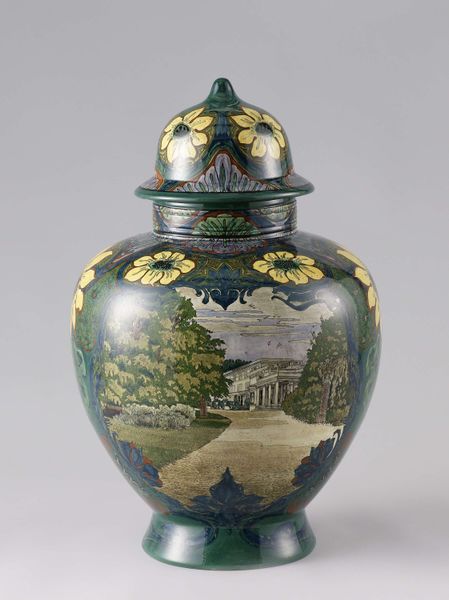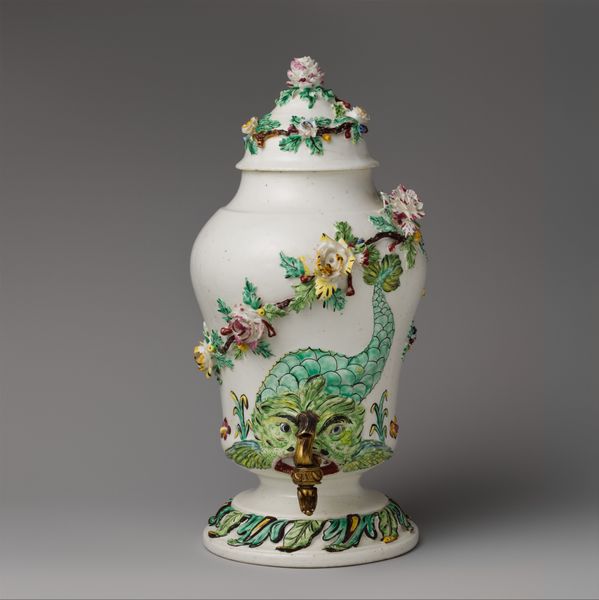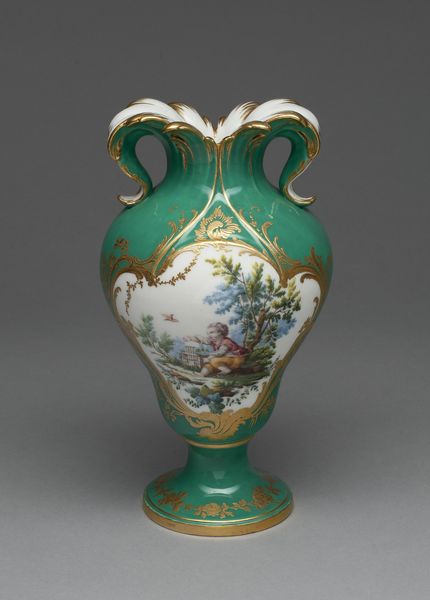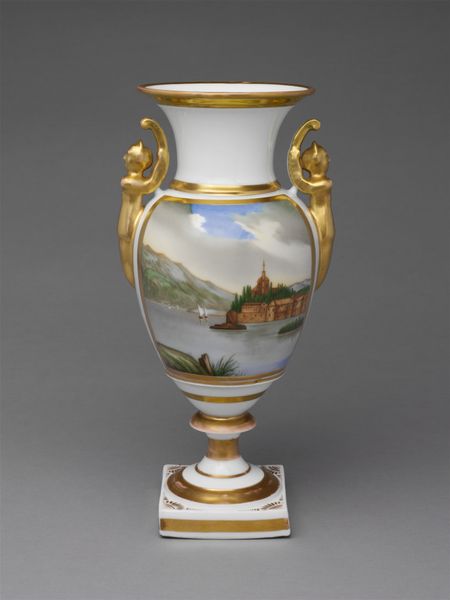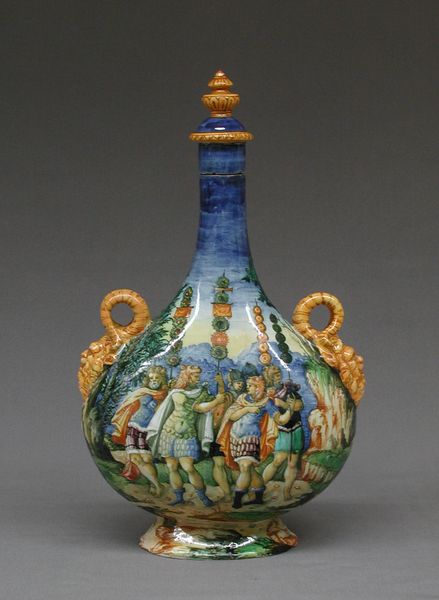
mixed-media, ceramic
#
mixed-media
#
art-nouveau
#
landscape
#
ceramic
#
ceramic
Dimensions: height 75.5 cm, diameter 50 cm
Copyright: Rijks Museum: Open Domain
Curator: The work before us is a ceramic vase with a lid made by N.V. Haagsche Plateelfabriek Rozenburg in 1896. The piece showcases an idyllic rendering of the house Ter Horst amidst a vibrant Art Nouveau aesthetic. Editor: The immediate sensation is quite soothing. There is a deliberate layering in how the decorative floral motifs, executed in bright yellow, intertwine with the naturalistic scene—evoking a sense of protected luxury, perhaps. Curator: The structure and glazing technique certainly capture the spirit of its time, wouldn't you say? Consider the balance the maker strikes. There’s the symmetry inherent in the vase itself, juxtaposed with the sinuous lines so characteristic of Art Nouveau that soften the geometry. Editor: True. However, the representation of Ter Horst as a somewhat impenetrable manor almost suggests an idealized image of the aristocracy, doesn't it? Considering the economic disparities in the Netherlands at the time, one has to ask—for whom was this vessel ultimately created? Curator: It’s possible to interpret it through that lens. However, consider also how the medium, ceramics, provides an accessible surface for art. The intention might simply be a celebration of national architecture infused with decorative patterning. Note the detail in the portrayal of Ter Horst itself—observe the clarity with which the architects designed windows, for example. Editor: A celebration of wealth and power becomes inseparable from architecture, surely? One could argue that the vessel's very existence signifies the solidification of wealth as art. Its existence within this context perpetuates exclusionary art. Curator: I recognize your argument and positionality within these readings. Viewing it strictly in terms of socioeconomic power, nonetheless, neglects consideration of the craft itself. The meticulous design demonstrates mastery of the vessel's construction itself—form, pattern, color cohesion. Editor: Ultimately, art, irrespective of intent, can hold embedded biases, as they become representations and reifications of what culture deems appropriate or notable. Examining a vessel, even so finely crafted as this, is essential to acknowledging and confronting those ingrained social imbalances. Curator: Very well. It seems the act of critical observation, as always, reveals depths often concealed in initial perceptions, thus rendering familiar objects new through contextualization.
Comments
No comments
Be the first to comment and join the conversation on the ultimate creative platform.
